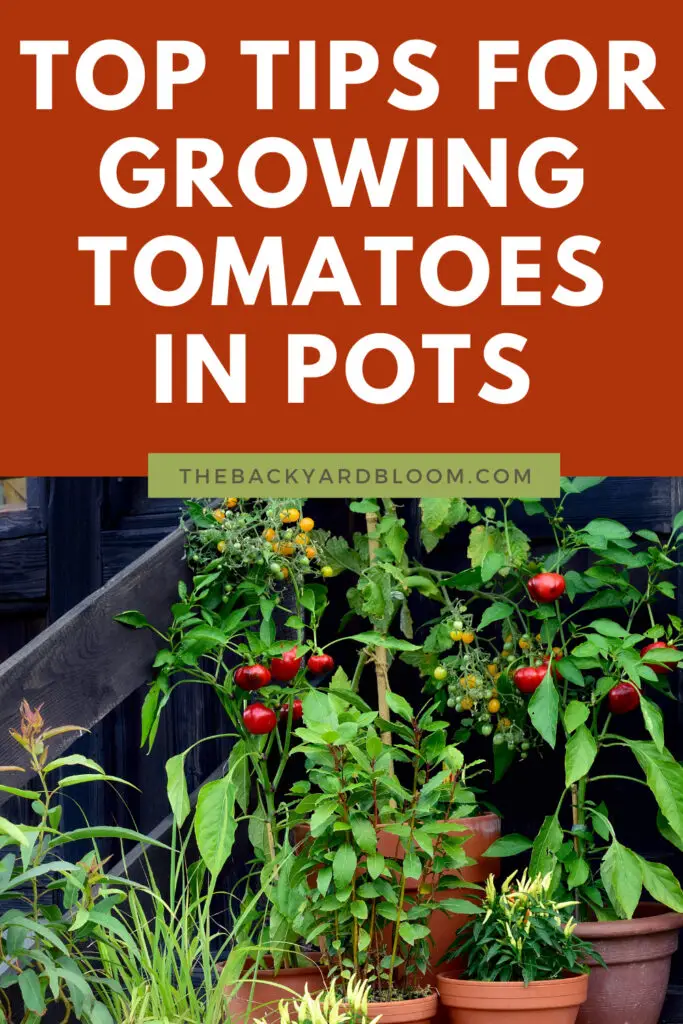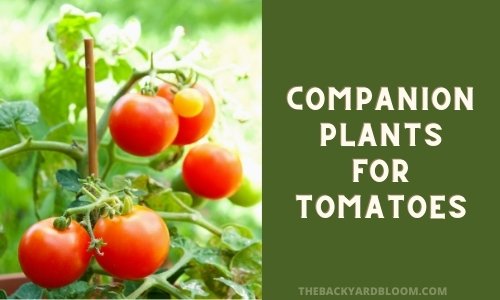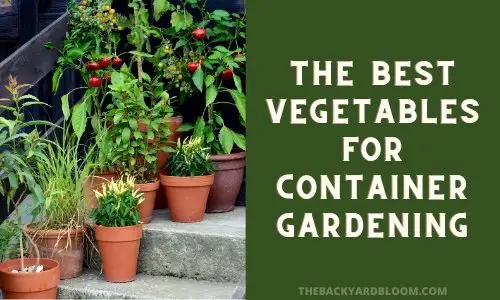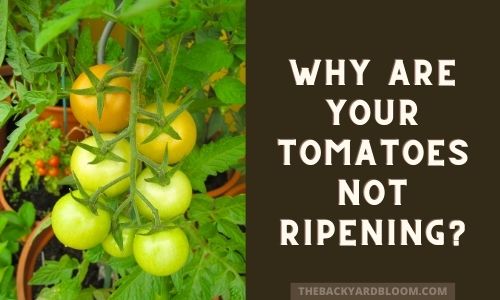Please note that this post may contain affiliate links. You can read my full affiliate disclosure at the bottom of the page.
Growing tomatoes in containers can be very easy to do, you just have to make sure that you pick the right soil and pot, keep up with the fertilizing, and water them the right way.
Having tomatoes grow in pots is a great way to grow your own food in a small space, and make a great addition to any container garden.
Anyone can grow tomatoes in pots, you just have to make sure that you do it the right way.
In fact, tomato plants are one of the most popular vegetable plants that people grow in home vegetable gardens.
- Sunlight for Tomatoes in Containers
- What Kind of Tomatoes are Best for Container Gardens?
- Getting the Right Pot for Your Tomatoes
- Planting Tomatoes in Containers
- Caging Tomatoes in Containers
- Should You Use Mulch for Tomatoes in Containers?
- Watering Tomatoes
- Tips for Growing Tomatoes in Containers Overview

Hydrofarm Tomato Grow System with Trellis
Sunlight for Tomatoes in Containers
How much sunlight do tomatoes growing in pots need?
Just like tomatoes in a backyard garden, tomatoes in pots need at least 6 hours of sunlight.
If you don’t have a spot for that much sunlight, make sure you are able to move your pots around so your tomatoes can continue to get sun throughout the day.
If you aren’t sure about where sunlight falls on the place where you are thinking about putting your container garden, just watch it for a few days and take some masking tape to put it down at certain intervals where the shadow lines are falling. This way you can be sure that where you put your tomato plants is getting the proper amount of sunlight.
What Kind of Tomatoes are Best for Container Gardens?
What type or tomato should you grow in a pot?
Determinate tomatoes are the best kind of tomatoes for container gardens.
These are the type of tomato plants that just grow to a certain height and then stop.
Some examples of determinate tomato plants are Purple Cherokee, Roma tomatoes and, Beefsteak tomatoes.
However, you can grow indeterminate tomatoes in containers. But you need to make sure you provide your tomato plant with enough support as these types of tomatoes grow like a vine. Indeterminate tomatoes will also be a bit more challenging to grow in a pot than determinate tomato plants.
But if you feel like you are up for the challenge then it can be a very good reward to grow indeterminate tomatoes.
It is best to use transplants that you started from seeds or seedlings that you have bought from the garden store when you are growing tomatoes in a container garden.
Getting the Right Pot for Your Tomatoes
What size of pot is best for growing tomatoes in containers?
You want to make sure that your tomato plants have plenty of room for their root system, so using deep pots is best.
The minimum size for a container is at least the size of a 5-gallon bucket, but the bigger the container the better. You want to make sure the container you use to grow your tomato plants are very deep. Tomato plants require a lot of space for their root systems.
Also, make sure that the container you are putting your tomato plants in are able to drain well. Soil that is too moist and retaining water will kill your tomato plants.
So if you use something like a 5-gallon bucket, make sure to drill drainage holes in the bucket. Or if the container you choose to use doesn’t have drainage holes make sure to add some.
Reusing Pots
If you are reusing a pot for your tomato plants, you will want to clean and disinfect them before reusing it.
Just use some bleach and water to make sure you disinfect the pot well. This will help avoid adding disease or fungus to your tomatoes that could be left over from a previous plant.
Planting Tomatoes in Containers
When it comes to how to plant tomatoes in containers, it’s a bit more involved than a traditional backyard garden.
The soil has to be right, and there will be more fertilizing since the normal habitat of an in-ground garden isn’t available.
You want to make sure that you only plant one tomato plant per container. This will ensure that it has enough space for its roots.
Covering the Tomato Plant Stalk
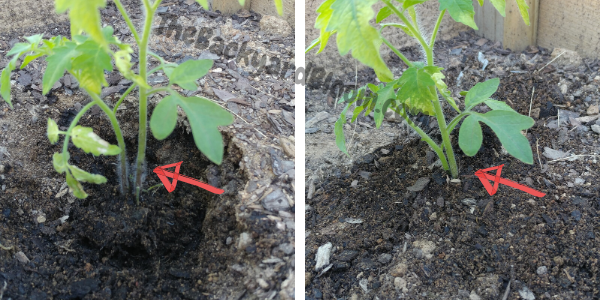
If you look at your tomato seedlings you will notice that the bottom part of the stalk has a bunch of little hairs.
These are roots in the making waiting to happen. They are waiting to be berried and touch the soil to become more roots for the plant.
So when planting tomato seedlings be sure to pick off lower leaves and bury part of the stalk so that the plant can have a better root system.
Soil
You want to make sure to use premium quality potting soil that is loose and well-draining.
You don’t want to use topsoil, you want to use a potting mix soil.
Since you won’t have nature providing all the goodies that earthworms and microbes can supply in regular topsoil, plant nutrition is of the utmost importance when choosing the soil for your container garden.
It is also a good idea to use pre-moistened soil, this will help prevent transplant shock.
The Best Soil For Tomatoes in Containers
I personally use Espoma Organic Potting Soil mixed with Perlite for extra moisture control for my container plants. This soil already has earthworm castings in it so I don’t have to mix extra in when planting my container garden.

If you do use potting soil that doesn’t have earthworm castings already mixed in, it’s a good idea to add some yourself as a soil conditioner.

Fertilizing
Fertilizing your tomato plants is something that you have to make sure you do. There is no getting around this step when growing tomatoes in containers.
Fertilizing is important, since your tomatoes will be in pots you are in charge of their food. You won’t have the natural ecosystem that occurs in the ground in a traditional garden.
You want to try to get fertilizer that is high in nitrogen and phosphorous for your tomatoes to mix with the soil when you first pot them. Or if the soil that you use already has fertilizer mixed in, then you will be wanting to add fertilizer to your gardening routine.
Nitrogen will help with leaf production, and phosphorous will help with root development and flower production.
Trace minerals are also important, no matter which soil you use they do not have the amount of trace minerals that the tomato plants need.
You will also want to add calcium to the soil. You can either get a bag of garden lime or get an all-purpose fertilizer that contains calcium carbonate. Without calcium, your tomatoes can get blossom end rot.
You will want to fertilize your tomato plants about every 2 weeks after you plant them.
The Best Fertilizer for Tomatoes in Containers
I like to use Jack’s Classic All Purpose Plant Food. It’s a 20-20-20 ratio of nitrogen, phosphorous, and magnesium. It also has other micro-nutrients including calcium carbonate. You can mix it with water and water your plants every two weeks with this. By using this in your water, it makes it super easy to make sure your container garden plants have a good fertilizing schedule.

Caging Tomatoes in Containers
If you plant determinate tomatoes, you will want to provide the stalk with support.
You can use bamboo or tomato cages.
Make sure to put this in place when you plant your seedlings. By doing this you avoid hurting any part of the root system when putting the support in the pot with your plant.
If you plant indeterminate tomatoes, then you will want to have some sort of trellis for the vine-like tomato plant to grow on.
Should You Use Mulch for Tomatoes in Containers?
It is a good idea to use mulch for your tomatoes in pots.
The mulch will keep the moisture in, this will help prevent the soil from drying out too much.
Watering Tomatoes
It’s important to make sure your tomatoes do not dry out.
Even 24 hours without water after the plant has completely dried out will kill a tomato plant.
So when growing tomatoes in containers it is especially important to stay on top of watering them.
Usually, I am able to go with watering my tomatoes about twice a week. This of course depends on average rain amounts. Weeks without any rain may require an extra day of watering.
Too much water can cause multiple issues with tomato plants, so you want to make sure you don’t water them too much in addition to not letting them get too dry.
One way I like to use to make sure that my tomato plant’s soil is saturated enough and I don’t get water splashing up off the soil on the leaves is to use a drip irrigation system for my containers. You can get a system like this one from Amazon.
Tips for Growing Tomatoes in Containers Overview
- Make sure your tomato plants get at least six hours of sunlight per day.
- Determinate tomatoes are the easiest tomato plants to grow in a container garden.
- Use a pot that is very deep, at least the size of a 5 gallon bucket.
- Use a high quality potting soil like Espoma Organic Potting Soil.
- Make sure to regularly fertilize your tomato plants with an all purpose fertilizer.
- Provide support for your tomato plants with either stalk support or vine support like a trellis.
- Use mulch to help retain moisture and keep your tomato plants from drying out too fast.
- Regularly water your tomoatoes, make sure that the soil doesn’t get too wet and that they don’t dry out.
